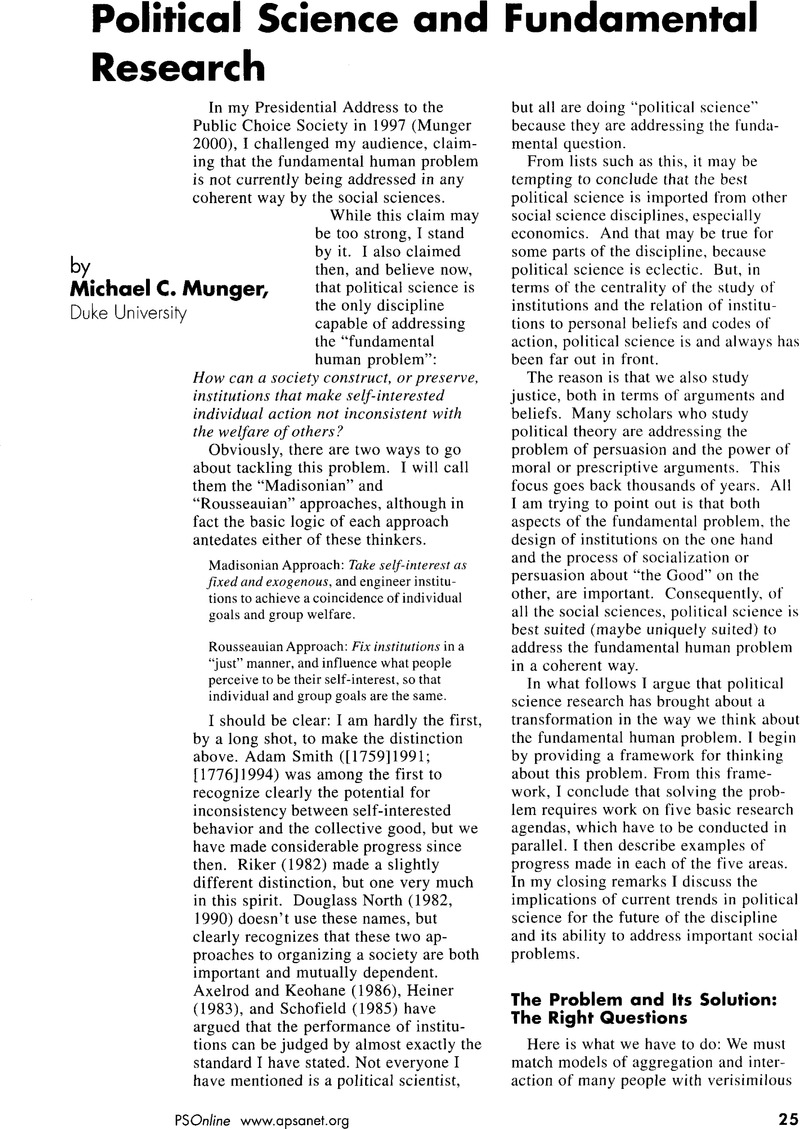Ladha, Krishna, and
Miller, Gary.
1996. “Political Discourse, Factions, and the General Will: Correlated Voting and Condorcet's Jury Theorem.” In
Collective Decision Making: Social Choice and Political Economy, ed.
Schofield, Norman.
Boston:
Kluwer Academic.
Google Scholar 